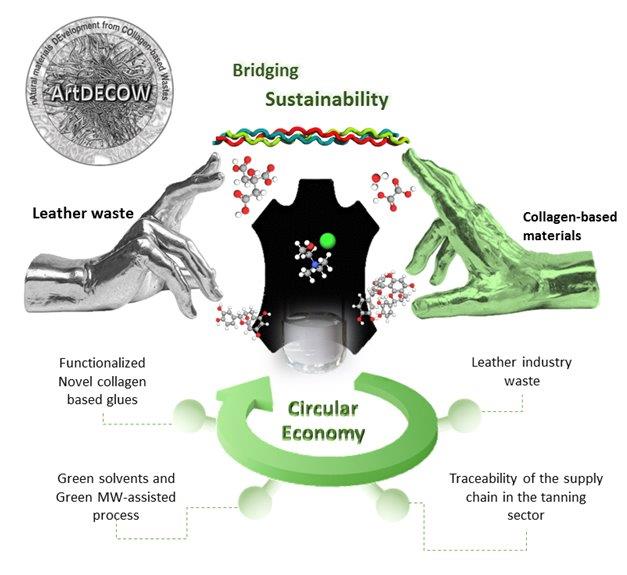 Environmental protection is a major concern all over the world and industrial pollution control is one of the PNRR main themes.
Environmental protection is a major concern all over the world and industrial pollution control is one of the PNRR main themes.
Leather manufacturing is one of the most ancient and widespread industrial activities in the world, in which leather, mainly composed of collagen, is chemically modified to obtain goods. Finished leather is obtained by treating animal skins and hides – by-products of the meat industry - with chemicals (tanning agents) to modify the macromolecular structure of collagen to obtain a material that is suitable for clothing, footwear, handbags, furniture, tools, and sports equipment. Leather making industry generates a huge economy, valued at USD 407.92 billion in 2021 and is expected to expand at a compound annual growth rate (CAGR) of 6.9% from 2022 to 2030.
However, traditional leather processing (from pre-tanning to finishing operations) requires more than 200 different chemicals generating considerable amounts of liquid and solid wastes of huge environmental concern. One of the thorniest problems linked to sustainability is that of the end-of-lives of leather products and their disposal, and how to recycle them and reintroduce them in the market in a virtuous cycle that limits waste.
Circular economy (CE) models encourage the use of renewable resources and wastes as secondary raw materials, enabling the industry to achieve the major sustainable development goals (SDGs) along with uplifting the economic and environmental benefits.
ArtDECOW will accomplish the full valorisation of leather waste, from the extraction and re-use of the main valuable constituent – collagen – to the extraction and (possible) re-use of minor, but still valuable, constituents, such as dyes and tannins. To this aim, new green methods of extraction and synthesis will be implemented, which will rely on the use of (natural) deep eutectic solvents, microwaves (MWs) assisted process and laser cross-linking. In this context, the four scientific objectives of ArtDECOW proposal will enable the generation of high value biochemicals (collagen) as well as new tools for product/process tracing and sustainable tanning processes.
ArtDECOW’s impact is therefore fully in compliance with the second mission of the Recovery Plan “M2: Green Revolution and Ecological Transition”, targeting the exploitation of waste products and intensively minimizing waste disposal (M2C1).


